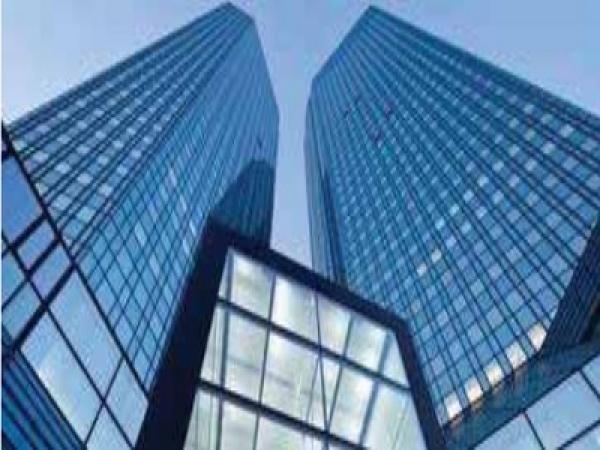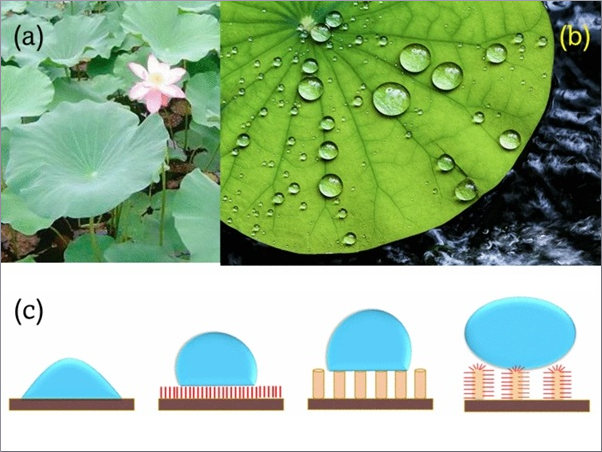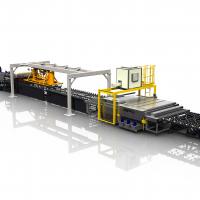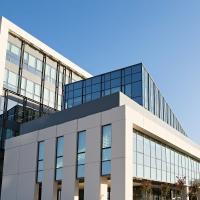Udo Schreiber 1, Ingo Wegener 1, Sven Stille 1, Dr. Jutta Trube 1, Dr. Stephan Küper 1
1 Leybold Optics GmbH, Alzenau, Germany
udo.schreiber@leyboldoptics.com
Keywords
Large area coating, heat treatable low emissivity coating, heat isolation, safety glass manufacturing
Abstract
Heat treatable low emissivity layer stacks available in the market are often proprietary and involve all of metallic, oxidic and nitridic layers. This paper describes an alternative set of layers stacks which comprises only metallic and oxidic layers and which can be obtained with Leybold Optics’ coaters.
The stacks consist of a silver layer contained in an appropriate arrangement of different blocking and dielectric layers with a high reflectance in infrared spectra range and high transmittance for visual light. It withstands heat treatment requirements for safety glass production.
The described layer stack provides a transmittance of more than 80% at a sheet resistance of less than 3Ω/□. By splitting the silver into two or three different layers with dielectric films in between it is possible to reduce the sheet resistance to 1 Ω/□ at a transmittance of 76 %. Compared to other temperable layer stacks the solution described here consists of metals and oxides only which contributes to fast and reliable process set up.
1 Introduction
Low emissivity coating (low-e) is a standard application in architectural glass industry to reduce heat exchange of buildings through window glass. It reduces heat loss in winter and heating-up in summer whereby the energy costs for heaters and air conditioning facilities are reduced significantly.
Heat treatable low emissivity coatings are designed for efficient production of thermally toughened safety glass. Due to the fact that tempered glass cannot be cut, a low-e coating that withstands the tempering process for safety glass manufacturing is coated on standardized large area glass panes. As it can be produced with high throughput and high coating yield it is a cost efficient way to provide low-e coatings on tempered architectural glass.
2 Layer stack design
2.1 Single low-e
The basic layer stack design shown in the first figure consists of a high reflective silver layer in combination with several dielectric layers. Those are arranged in an appropriate way to achieve good infrared reflection in combination with high visible transmittance.
In order to protect the silver layer from oxidation during tempering by diffusing oxygen atoms it is important to choose proper working points for the dielectric layers as well as for the blocker ZnO:Al.
[Figure 1] Schematic drawing of basic layer stack
2.2 Further layer stack embodiments
The presented basic layer stack can be modified by splitting the silver into two or three different layers, each of them embedded between AZO as seed layer and ZnO:Al as blocker. Splitting silver into several layers makes the spectrum transition from visual to infrared wavelength range steeper and realizes a lower sheet resistance at high visual transmittance.
3 Optical and electrical properties
3.1 Transmittance
Figure 2 shows typical transmittance spectra for single (SLE), double (DLE) and triple silver low-e (TLE) with its maxima around 550nm and different slopes between visual and infrared wavelength range. Due to splitting the silver layer the ability of blocking NIR light improves significantly.
[Figure 2] Transmittance spectra of different layer stack embodiments
3.2 Reflectance
The reflectance spectra in Figure 3 show a very low reflectance in visible range and a very high reflectance in infrared range, corresponding to the transmittance curves.
[Figure 3] Reflectance spectra
The triple low-e spectrum shows two minima in visual range and a local maximum in between. This behavior makes the adjustment of specified reflectance color values more difficult compared to single and double low-e systems because a small change of one minimum causes a large shift of color values.
3.3 Reflective color impression
Proper dimensioning of the dielectric layers is required in order to tune the reflective color impression to a neutral or slightly bluish (cool) value, which is requested by most customers. Thus the a* and b* values of the Lab color space have to be 0 or slightly negative. The layer stacks presented in this paper allow tuning of the color to the requested impression (Figure 4)
[Figure 4: Reflective color impression]
3.4 Sheet resistance
The emissivity of a low-e layer stack depends on the sheet resistance according to [1]:
ε = 0.0129 x R□ - 6.7 x 10-5 x R□²
Splitting the silver layer has a positive influence on the ratio between visual transmittance and sheet resistance, so that the emissivity is reduced significantly.
4 Influence of tempering process
Safety glass is produced by temperature induced change of glass structure. Applying a necessary temperature of 650°C for 10 min strains the coating so extremely that physical properties of the layer stack change and the silver layer may be damaged.
The root cause of these problems is diffusion of sodium out of the glass and oxygen that reacts with the silver layer. These damages are prevented by applying dense diffusion barriers as first and last layers and using blockers around the silver which react with oxygen and thereby prevent oxidation of the silver.
Sheet resistance decreases due to heat induced restructuring of the silver. An increasing resistance value indicates oxidation and therefore insufficient silver protection.
Oxidation processes during heat treatment cause shifts in refractive index of dielectrics and reduce absorption of blockers. This leads to increasing transmittance and shifting color values.
The challenge to meet is a compromise between good protection of silver and small changes in transmittance and reflectance color values. This goal is attained by accurate working point adjustments of diffusion barriers and blockers. The presented layer stack benefits from tempering with respect to the resistance properties while maintaining a virtually unchanged color impression.
5 Summary of results
The following experimental results are obtained with different embodiments of the mentioned layer stack:
[Table 1] Properties of low-e layer stacks
6 Conclusion
In conclusion, the layer stacks presented in this paper meet actual specifications for low emissivity coatings for insulating architectural glass. A very small shift of color values during tempering process qualifies these coatings for safety glass applications as well. The overall optical and thermal performance is competitive to other state of the art low emissivity products available on the market.
The glass coating customer profits from this stack because of the nitrogen-free process, which provides a more simple process and releases strains on gas separation, thus allowing a more simple coater, which in turn saves on the investment. Lastly, the layer stack is not covered by foreign IP and can be obtained from the coater manufacturer.
References
[1] Szczyrbowski J., Bräuer G., Ruske M., Schilling H., Zmelty A. (1999): New low emissivity coating based on TwinMag® sputtered TiO2 and Si3N4 layers. – In: Thin Solid Films, Volume 351, Pages 254-259
























